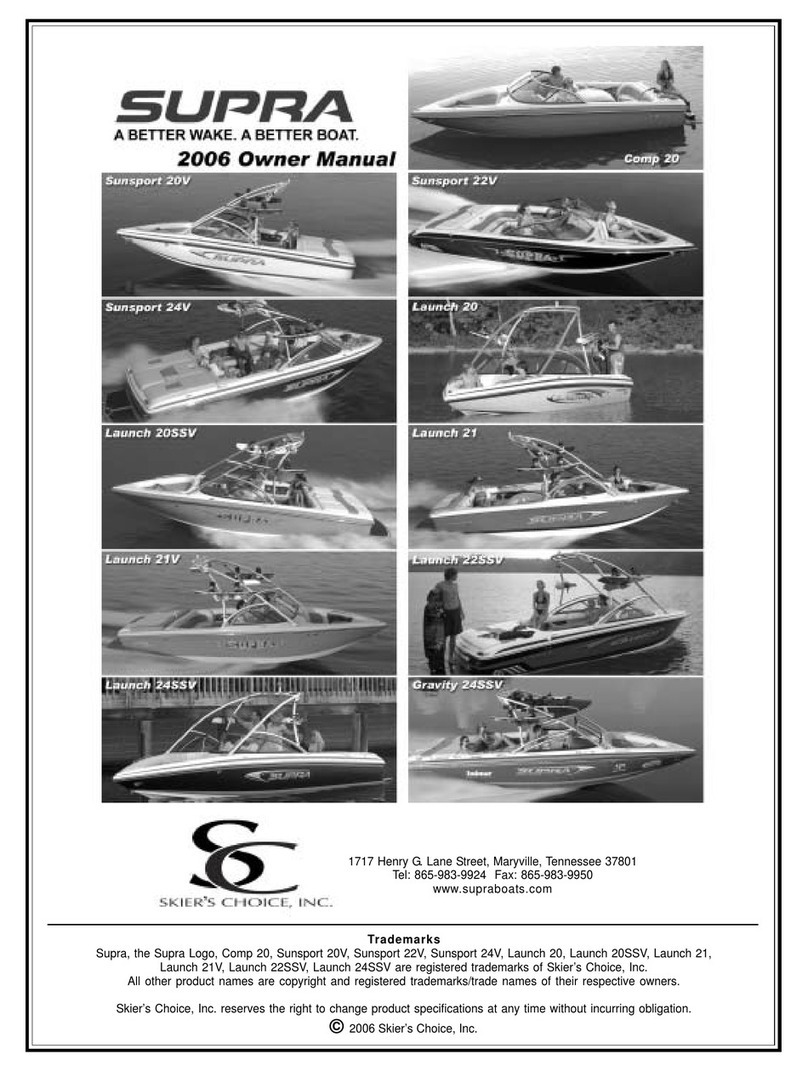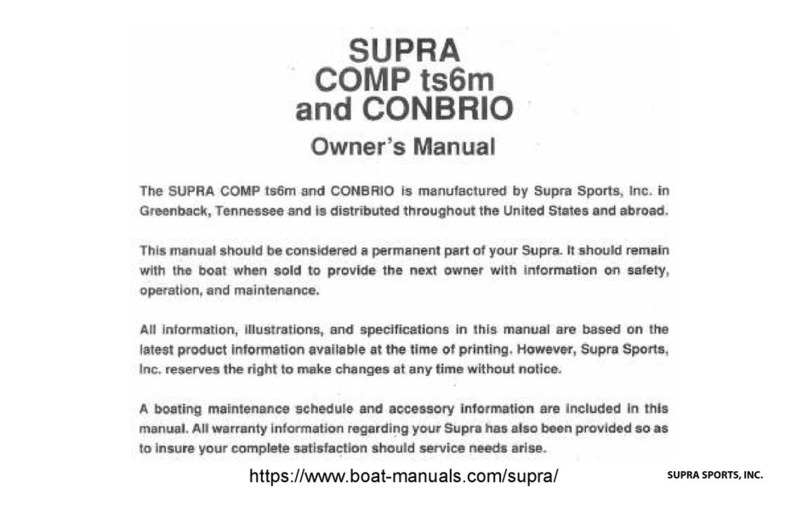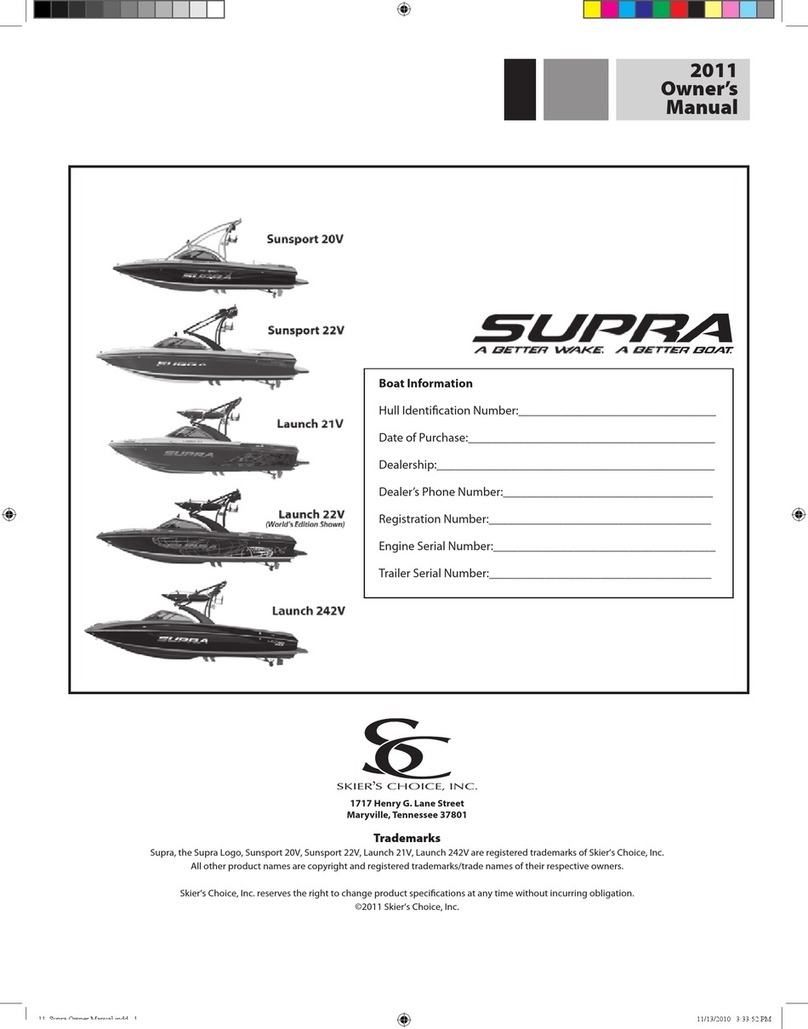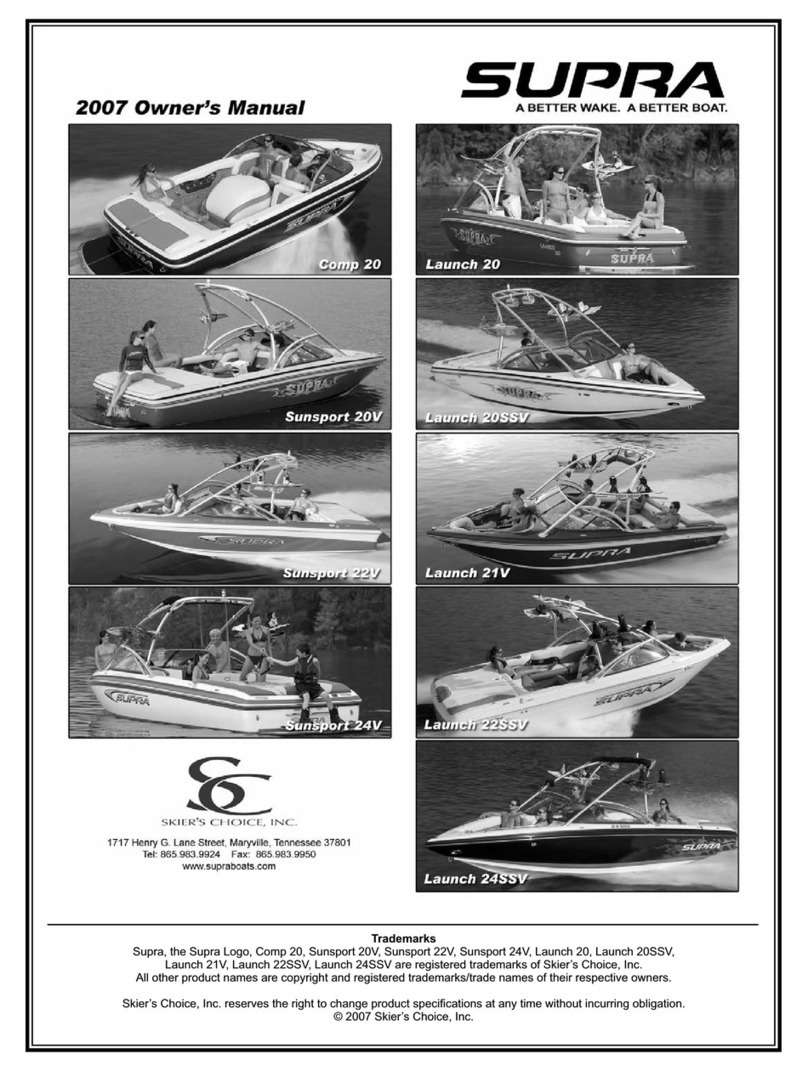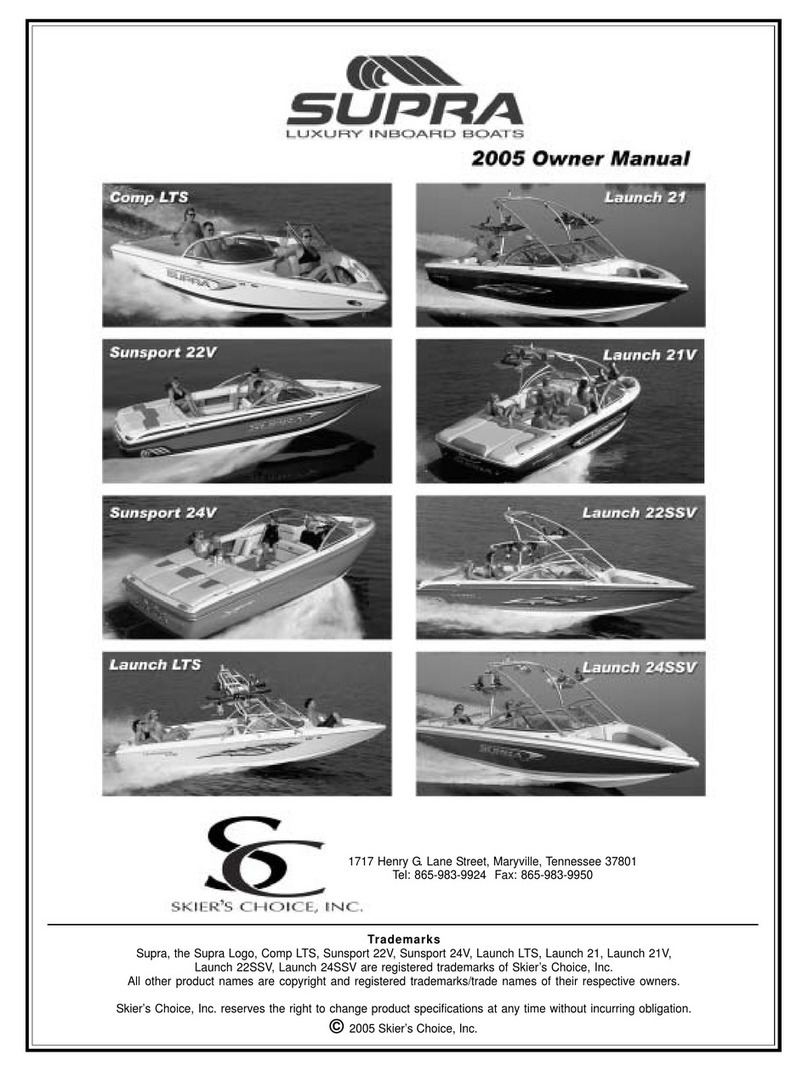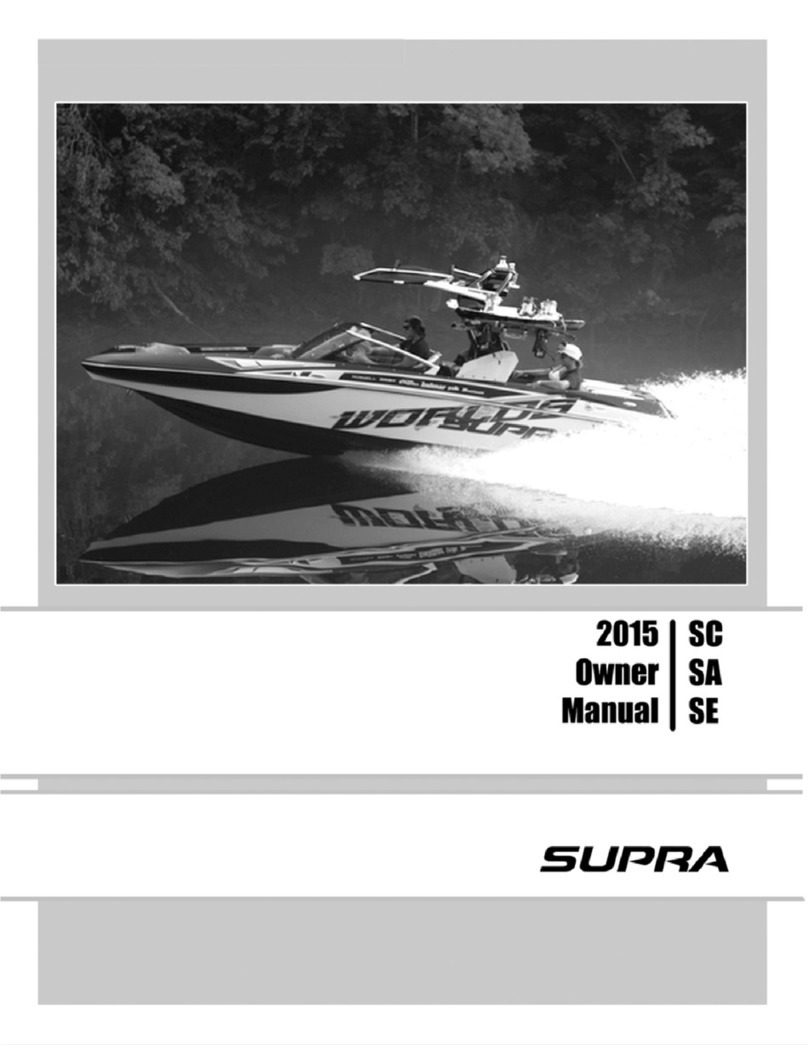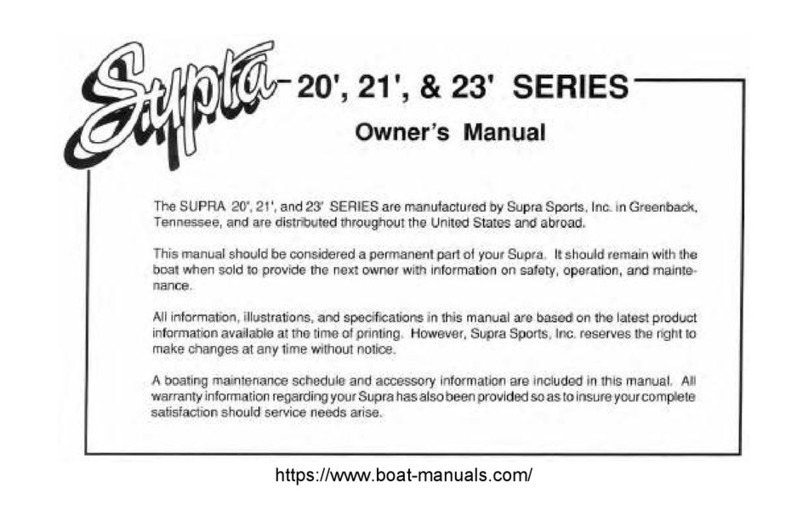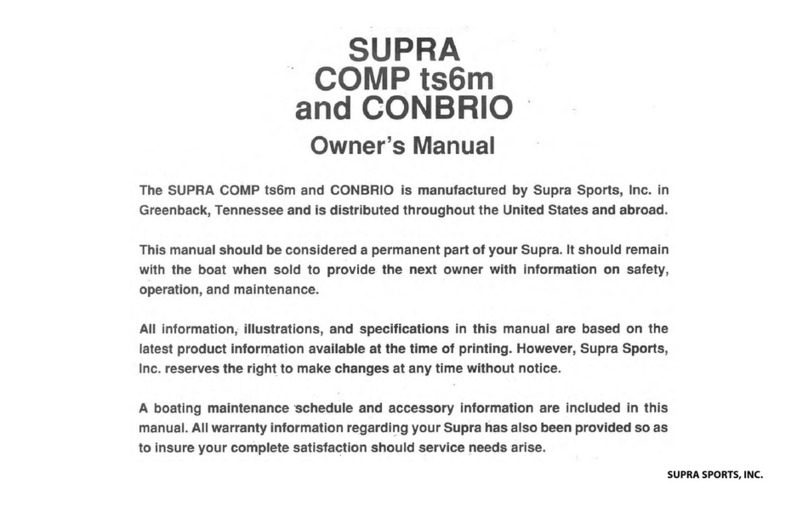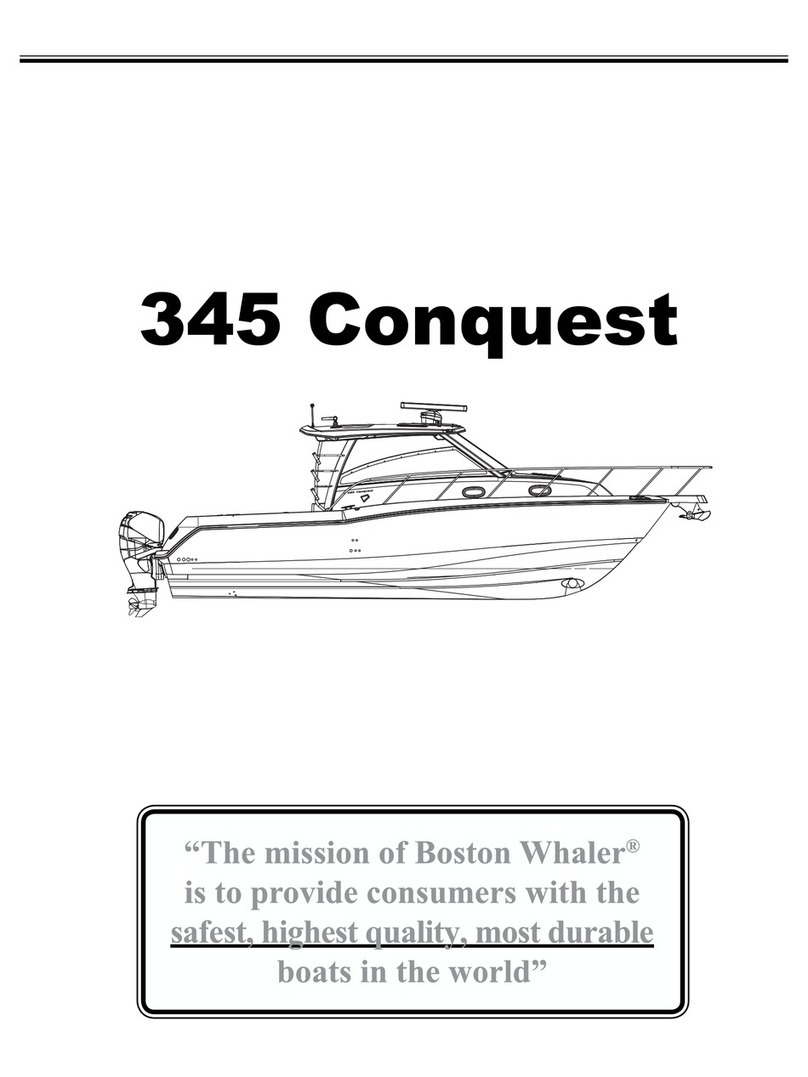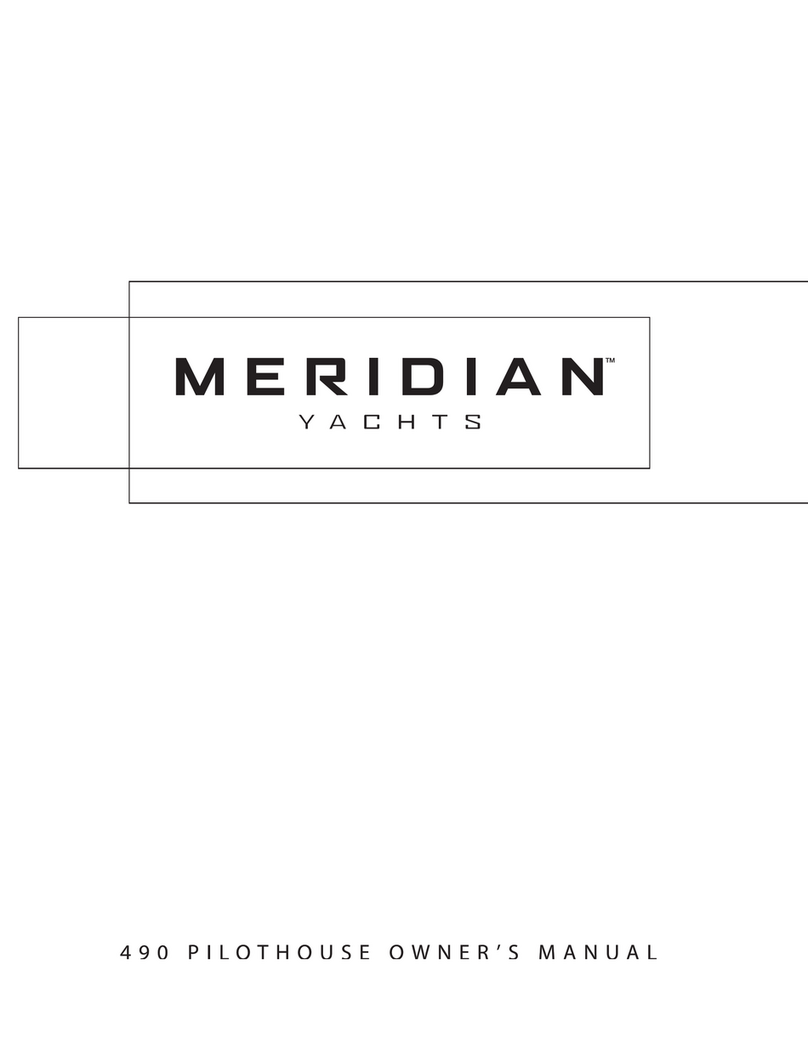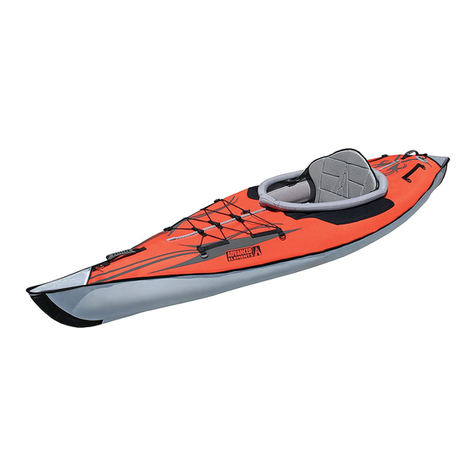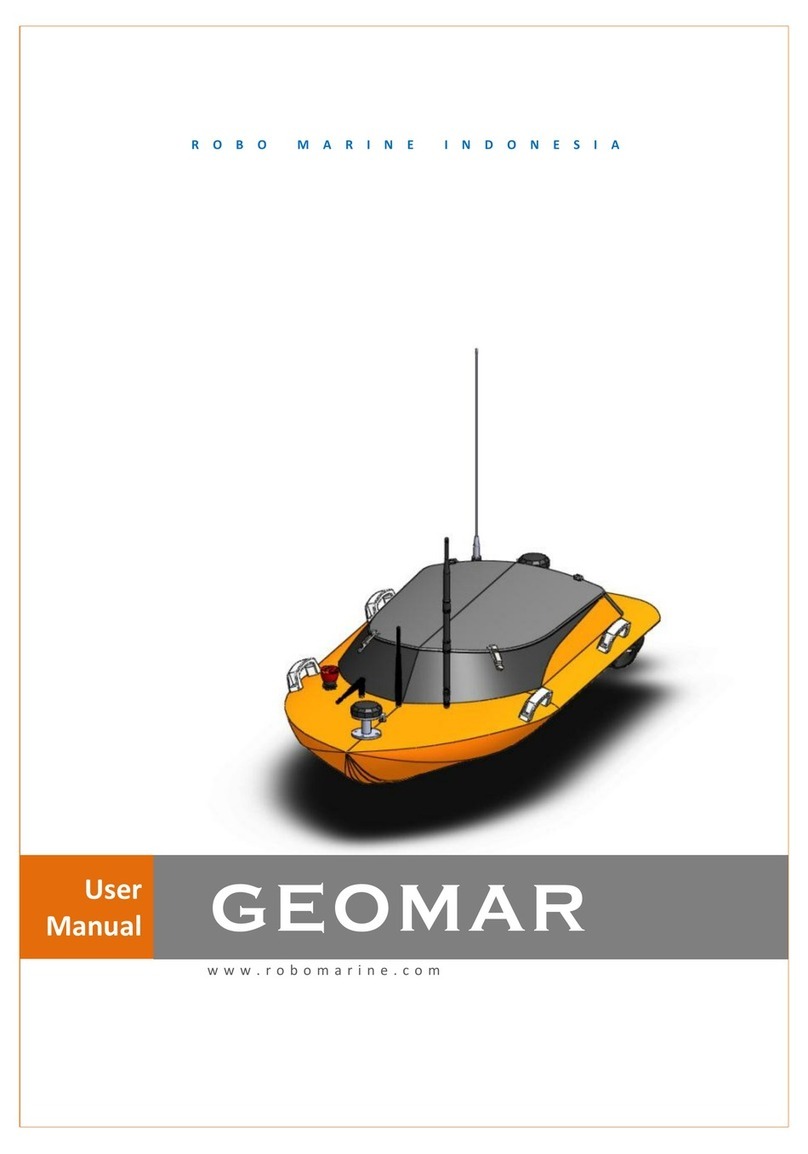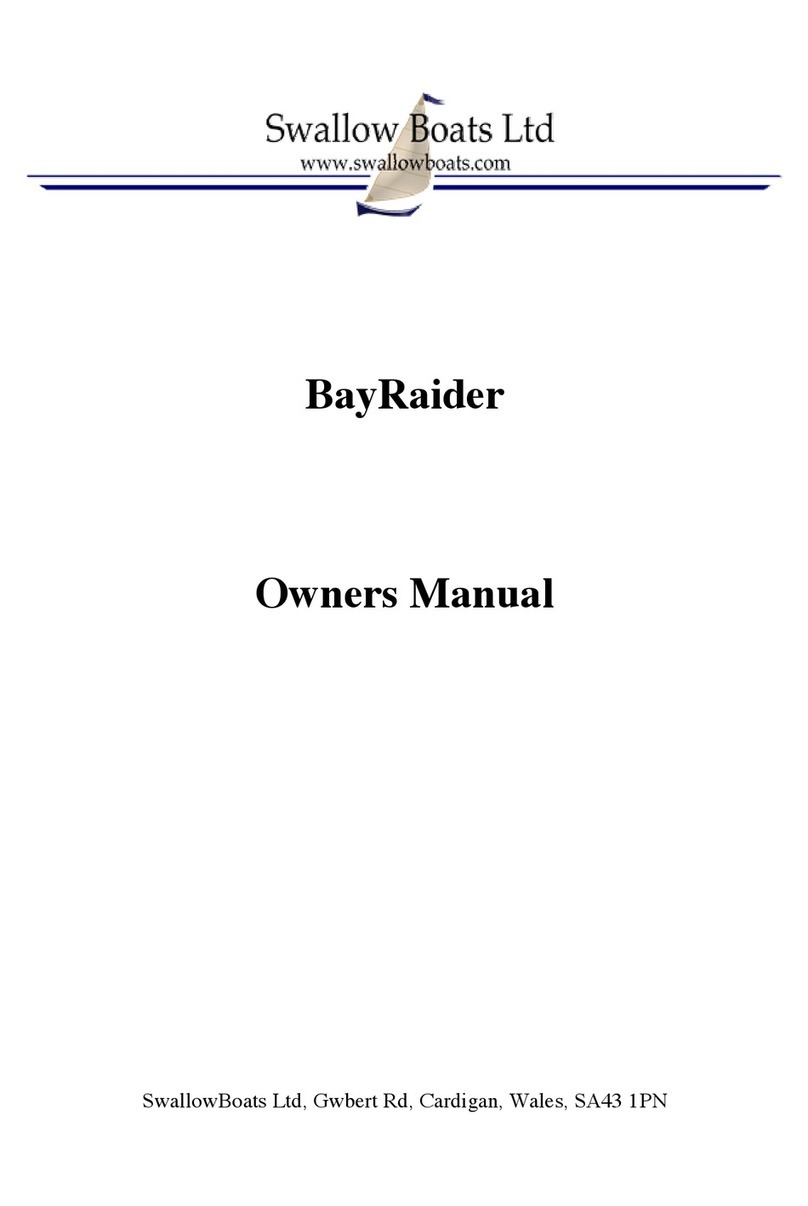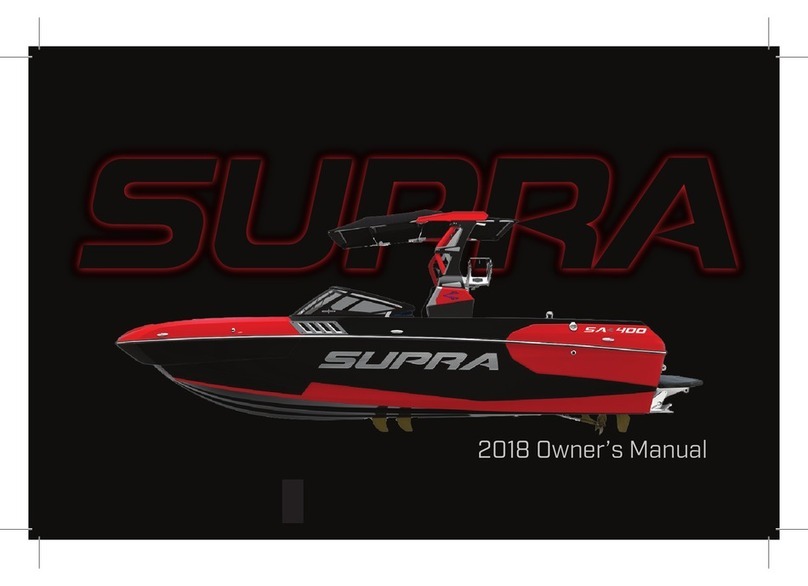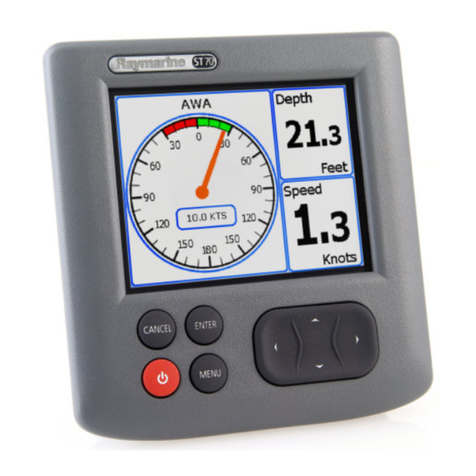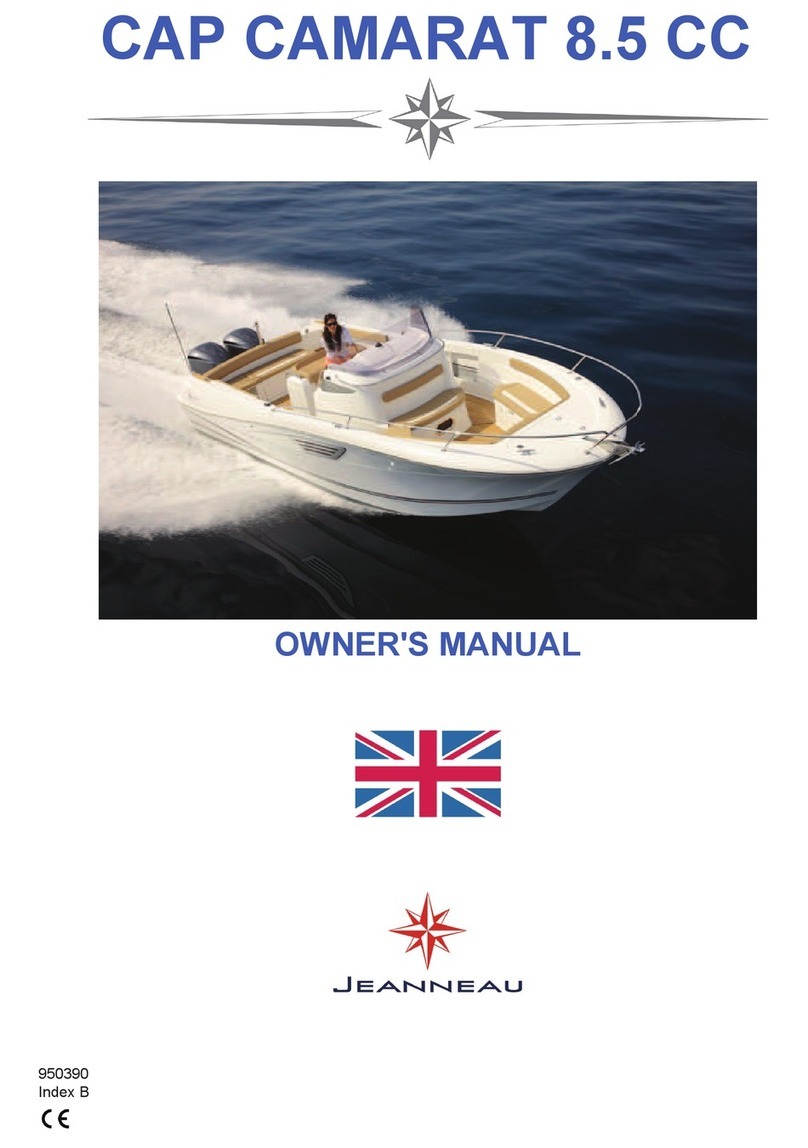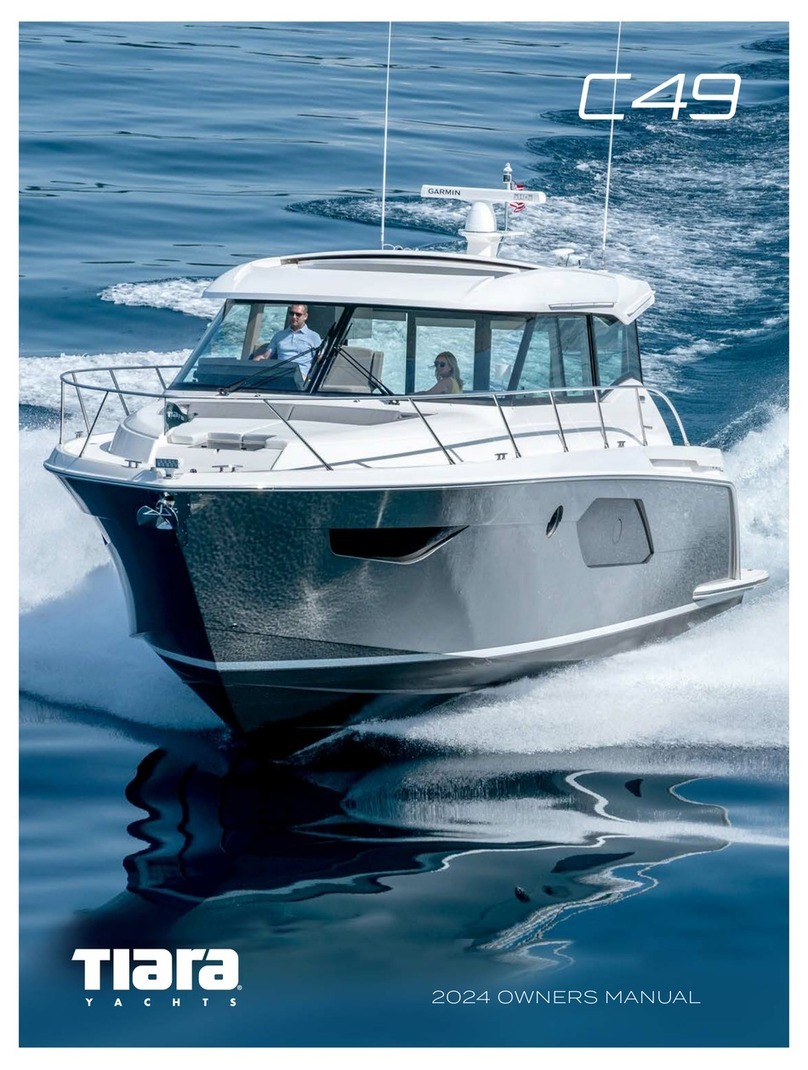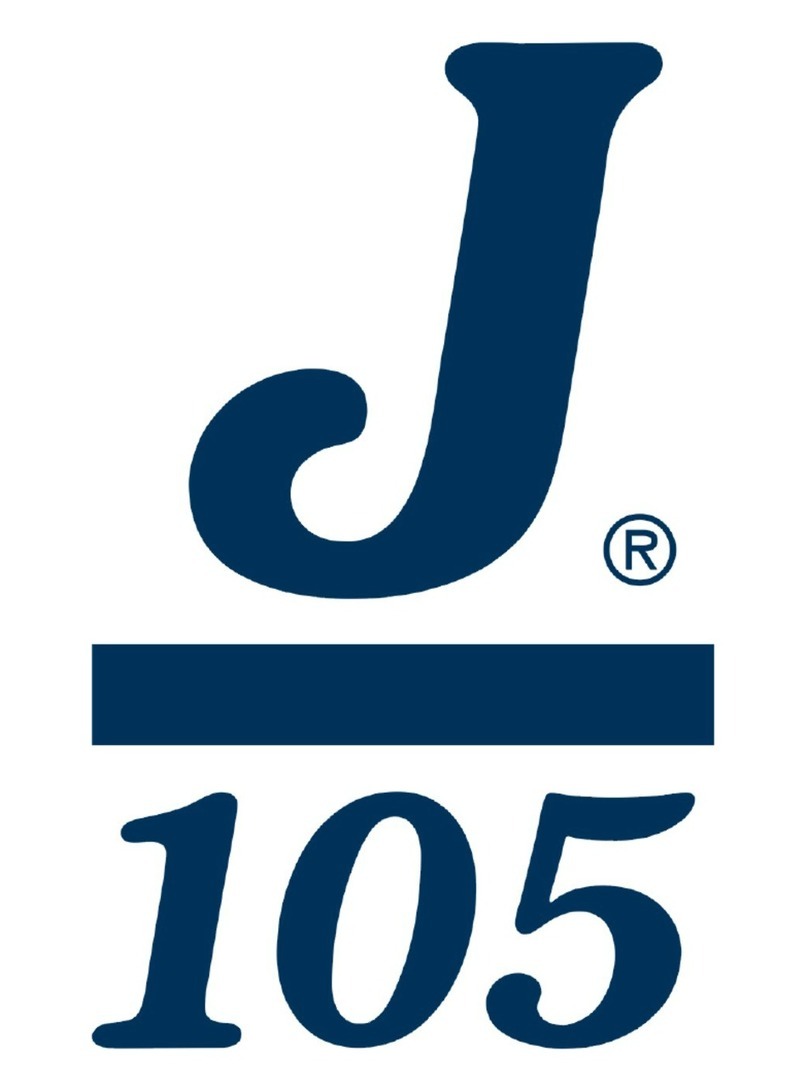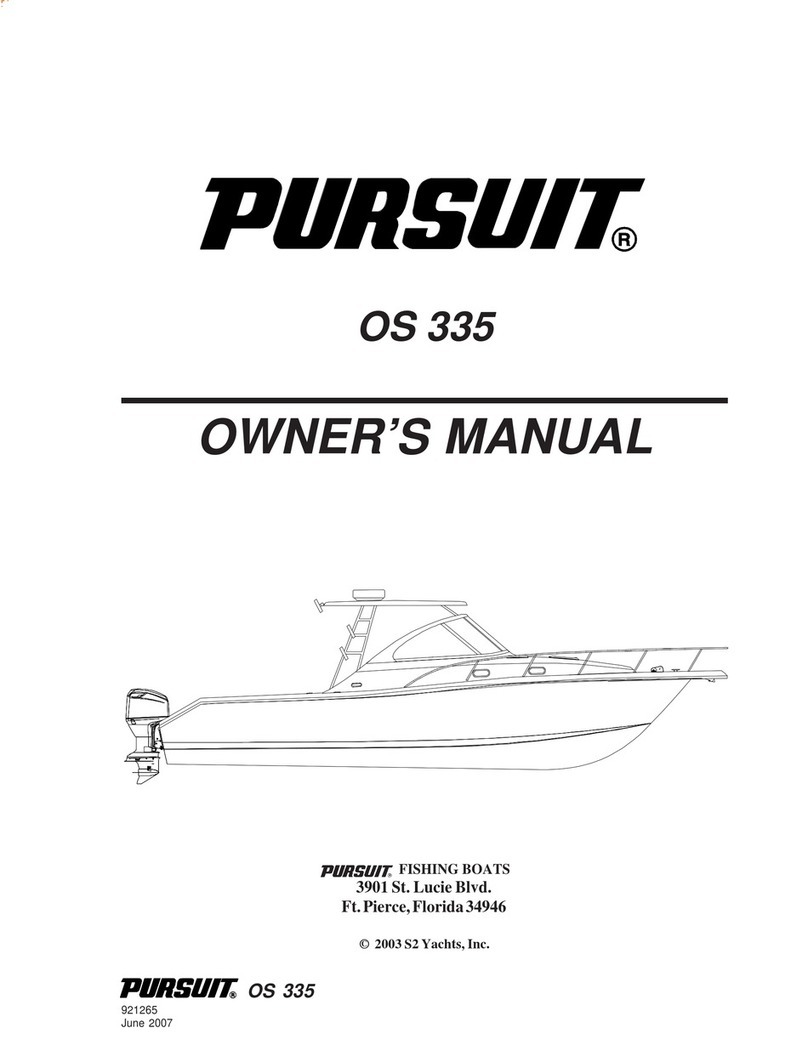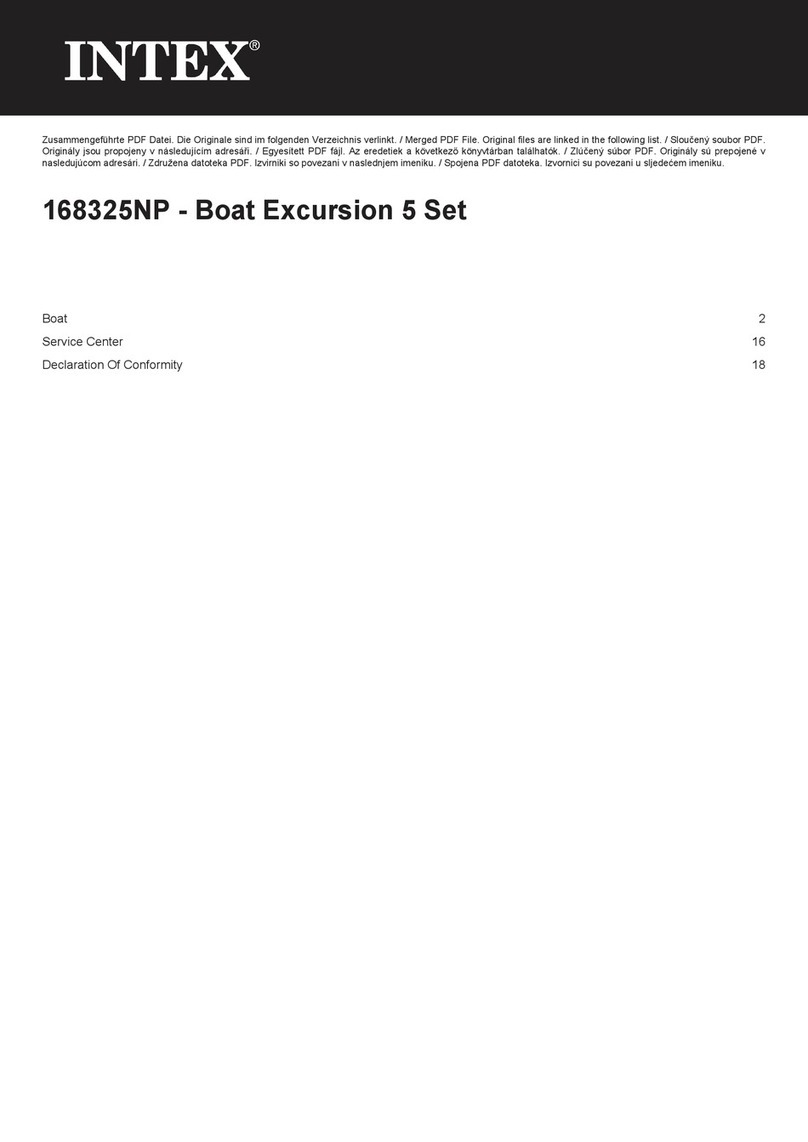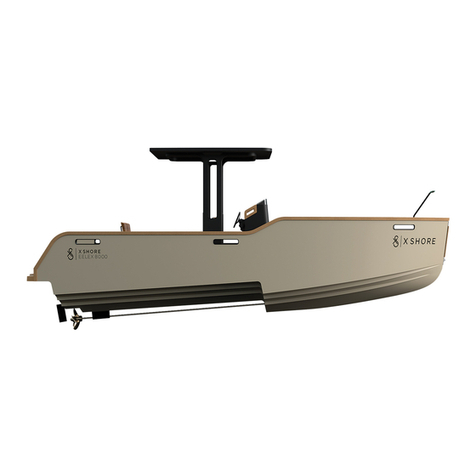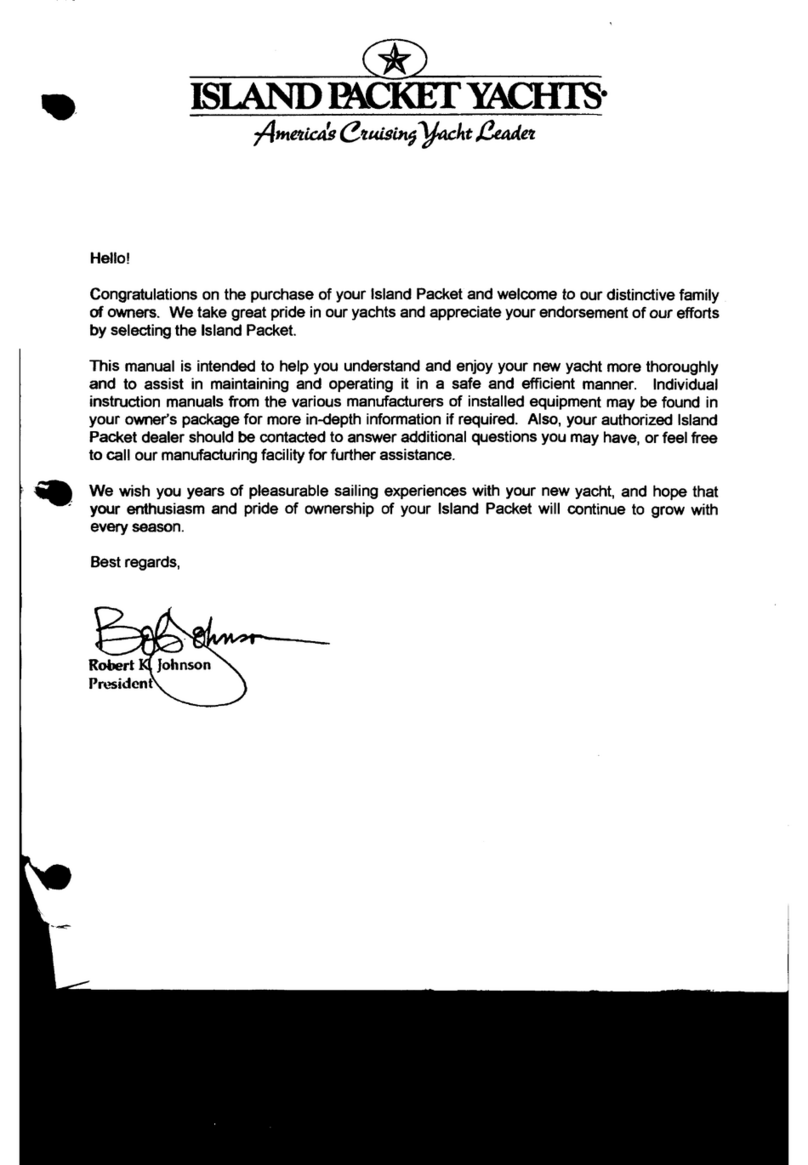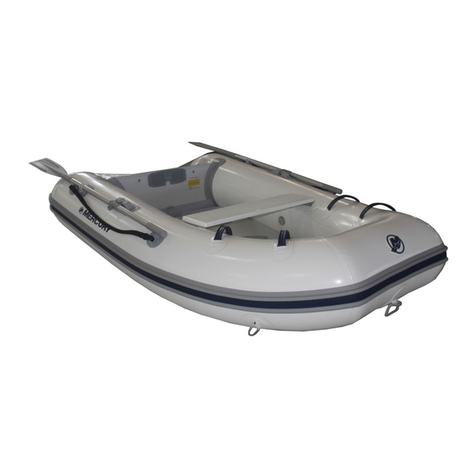
6© 2002 Skier’s Choice, Inc.
Safety Equipment
Your Supra has been equipped at the factory with most of the
federally required safety equipment for inland waters (Class
1, 16’-to-26’). This equipment includes:
- UL-approved Marine Fire Extinguisher, TypeA-BC (2 lbs.),
good for solids, liquids, and electrical fire
- ABYC-approved Marine Mufflers with water injection
- USCG-approved Marine FlameArrestor
- USCG-approved Engine Box Ventilation with spark-less
power blower
- ABYC-approved Electric Horn sound warning device
- USCG-approved inland lighting
Federal law also requires at least a Type I, II or III Personal
Flotation Device (PFD) for each person on board or being
towed on water skis or other recreational equipment. In
addition, one throwable Type IV PFD must also be on board.
As the owner, obtaining the appropriate PFDs is your
responsibility. Your Supra dealer can—and will be happy to
assist you.
NOTE: Requirements for coastal waters and inland waters
differ. Check with the local authorities for more
information.
Aresponsible owner willavoid potential problemsonan outing
by having additional equipment on board. Normally, this
equipment is dependent on the body of water and the length
of the trip.
Wesuggest the following—as a minimum. Your Supra dealer
can also assist you with additional recommendations.
- An anchor with at least 75-feet of line
- A manual bailing device for removing water
- A combination oar/boat hook
- A day-and-night visual distress signal
- A first aid kit and manual
- An airway breathing tube
- A waterproof flashlight
- Aset of local navigation charts
- Mooring lines and fenders
- Extra engine oil
- A tool kit
- Aportable AM/FM radio or weather radio
Boating-related accidents are generally caused by the
operator’s failure to follow basic safety rules or written
precautions. Most accidents can be avoided if the operator
is completely familiar with the boat, its operation, and can
recognizepotentially hazardous situations before an accident
occurs.
Failure to adhere to these precautions may result
in severe injury or death to you and/or others.
- Improper operation is extremely dangerous. Operators
mustread andunderstandall operatingmanualssupplied
with the boat before operation.
- On-board equipment must always conform to the
governing federal, state, and local regulations.
- Small children in the bow of the boat should be
accompanied by an adult at all times.
- Never stand or allow passengers to stand while the boat
is moving. You or others may be thrown from the boat.
- Never operate the boat while under the influence of
alcohol or other drugs.
- Gasoline vapors can explode. Before starting engine,
openengine box,check engine compartmentforgasoline
vapors, and operate blower for at least 4 minutes. Run
blower below cruising speed.
- Leaking fuel is a fire and explosion hazard. Inspect
system regularly. Examine fuel tanks for leaks or
corrosion at least annually.
- Neveroverride ormodify the enginesafety shut-offswitch
or engine neutral starting safety switch in any way.
- Never remove or modify components of the fuel system
inanywayexceptformaintenancebyqualified personnel.
Tamperingwith fuel componentsmay cause ahazardous
condition.
- Never allow any type of spark or open flame on board. It
may result in fire or explosion.
- It is the owner’s responsibility to check tightness of the
Rad-A-Cage Tower bolts BEFORE each use.
- The Rad-A-Cage Tower is designed to pull a single (1)
individual.DO NOT climb orsit onthe Rad-A-CageTower.
Rope may loop on inverted tricks. DO NOT sit behind
the pulling point of the Rad-A-Cage Tower.
General Safety Precautions
- To avoid serious personal injury, DO NOT be on or about
theswimplatformwhile engine is running and keep away
from rear of boat while engine is running.
- Toavoid serious personal injury, DO NOToperateengine
while anyone is on or about the swim platform or in the
water near the boat.
